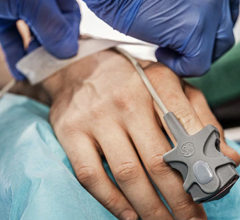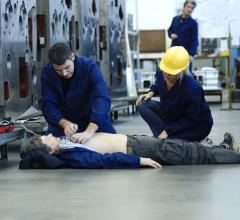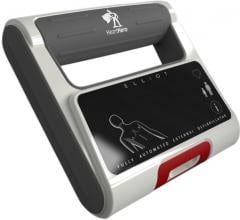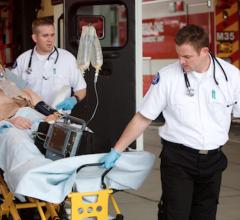
Dr. Marrouche launched an atrial fibrillation program at the University of Utah School of Medicine.
Efforts to reduce discovery-to-balloon (d-to-b) and door-to-balloon times is sweeping the country as hospitals put in place new protocols and strengthen their ties with local emergency medical service personnel.
Ideally, patients stricken with ST-segment elevation myocardial infarction (STEMI) should receive a clot-busting drug like TPA (tissue plasminogen activator) within 30 minutes of onset of symptoms or undergo a balloon angioplasty within 90 minutes. Unfortunately, few hospitals have yet to achieve those optimum times. But they are getting better.
At the forefront of a national movement to reduce d-to-b times for STEMI victims is the State of North Carolina, which established the first statewide program of cooperation between hospitals.
Co-directed by two cardiologists at Duke University Medical Center in Durham, NC, the Reperfusion of Acute Myocardial Infarction in North Carolina Emergency departments (RACE) project has been able to foster relationships between hospitals that can perform percutaneous coronary implants and non-PCI hospitals so that STEMI patients can be transported to facilities where life-saving treatments can be administered within time limits set by the American Heart Association.
Working in tandem
Years before the AHA released its findings on the lack of timely care being delivered to the majority of STEMI patients, Christopher Granger, M.D., professor of medicine and director of the cardiac care unit at Duke University Medical Center and James Jollis, M.D., an associate professor of medicine at Duke, began a series of clinical trials aimed at improving care for those stricken with one of the most common and deadly forms of a heart attack.
According to Dr. Jollis, the first multiple trials began in the 1980s but the RACE project did not officially begin until 2003 when a pilot program was set up to determine what measures needed to be put in place in order to deliver life-saving treatments. Phase II of the RACE project was launched in 2005 and involved the cooperative efforts of 10 PCI hospitals and 55 non-PCI hospitals, as well as associated emergency medical teams To ensure statewide coverage, participating hospitals were divided into five regions: Durham, Greenville, Winston-Salem, Charlotte and Asheville.
After collecting data on nearly 2,000 STEMI patients over a two-year period, the researchers published the results of Phase II in the November issue of the Journal of the American Medical Association and presented their findings at the American Heart Association’s annual meeting in Orlando on November 4, 2007.
The findings, as published in JAMA, showed substantial reductions within all time frames. Median time from door-to-treatment for hospitals offering angioplasty fell from 85 to 74 minutes, (22 percent); median time from door-to-infusion of clot-busting therapy fell from 35 to 29 minutes, (17 percent); median time from door-in to door-out at transfer hospitals fell from 120 to 71 minutes, (41 percent); and median time from arriving at a feeder hospital to beginning treatment at a receiving hospital fell from 149 minutes to 106 minutes (29 percent).
Dr. Jollis says that while d-to-b times have improved, he’s striving for under two hours from first medical contact to angioplasty. Phase III of the RACE project is about to begin. “We now have approached, and have agreements from, the remaining PCI centers across the state,” said Dr. Granger, adding that the total number of PCI hospitals will now be 20.
Funding for Phase II was provided through a $1 million corporate grant from Blue Cross/Blue Shield of North Carolina, which was matched by the participating PCI hospitals. One-third of the funding for Phase III, or $200,000 a year for two years, will come from foundations, Dr. Jollis said. The AHA also will provide support by training nurses and organizing meetings, he said. Drs. Jollis and Granger also note that Phase III will concentrate primarily on the state’s poorer counties where there are few PCI hospitals and will continue to work on EMS preparedness.
AHA calls for changes
In March 2006, the AHA held a three-day conference focused on STEMI, during which clinical trials showed that outcomes are significantly better when patients who arrive at a non-PCI hospital are immediately transferred to a PCI hospital. This conference led to the establishment of a national, community-based STEMI initiative called Mission: Lifeline, a comprehensive, patient-centric program that addresses the continuum of care for STEMI patients beginning with entry into the system. This initiative has evaluated several of the model systems, including the RACE system in North Carolina and the Minneapolis Heart Institute system in Minnesota, for which the leaders of these systems are Drs. Jollis, Granger and Tim Henry, M.D.
Lifeline is attempting to foster cooperation on a national level between PCI and non-PCI hospitals, although there have been cases where non-PCI hospitals feel that they are losing patients to some of their larger, well-funded competitors. Lifeline is also collaborating with multiple EMS organizations both on a national and local level.
A change in mindset
In order to provide faster diagnosis and treatment, a PCI hospital needs to have in place a STEMI team composed of paramedics, emergency department and cath lab personnel, as well as an interventional cardiologist, said Dr. Jollis. As part of the RACE program, a single telephone call from the field was enough to mobilize the cath lab team and prepare the hospital to admit the STEMI patient, even if no inpatient beds were available.
But what may seem an even greater challenge was the change made in the traditional roles played by physicians and first responders. Paramedics were trained to do much of the work normally done by emergency room physicians and emergency room physicians were trained to do some of the work reserved for cardiologists, including diagnosing STEMI from data being transmitted to the hospital. “Cardiologists had to give up some of the control we were used to having,” said Dr. Jollis. “It was a hard habit to break. But once we saw the results, we knew we could trust the process.”
Dr. Jollis said only one interventional cardiologist should be designated as part of this STEMI team. And that is the person who is called. “We have to avoid the argument of which cardiologist ‘owns’ the patient,” he said.
Unfortunately, this often is in direct conflict to what physicians are taught, Dr. Jollis acknowledged. “We are taught to individualize therapies,” he said. Dr. Granger agrees. “Cardiologists need to take a back seat in deciding when the patient needs reperfusion, but they need to take a leadership role in establishing the system of care.” On this last point, Dr. Granger said you need to establish a team of representative members that creates a “system” to improve care. And that system of care involves at least one PCI center, one non-PCI hospital and one EMS.
Also important is establishing a single telephone call process to activate the cath lab and providing for “feedback of performance” through which all parties can evaluate their strengths and weaknesses, he said.
In addition, Dr. Granger emphasizes the need to use pre-hospital ECGs to activate the cath lab. “Every ambulance should have an ECG on board and EMTs need to be trained to recognize ST-elevations,” he said.
But above all, hospitals need to have “a single regimen agreed upon up front so the ED and transferring hospital know what to do,” added Dr. Jollis.
Quick response, quick diagnosis
“With 100 firefighter paramedics, every ambulance that rolls has a paramedic on board,” said Corey Slovis, M.D., chairman of the department of emergency medicine at Vanderbilt University Medical Center and medical director of the Nashville Fire Department and International Airport. He indicated that their average response time for most heart attacks is four to five minutes.
While every one of their ambulances carries an AED (automated external defibrillator) manufactured by Philips Medical Systems, they also carry a separate 12-lead ECG monitor manufactured by ZOLL Medical Corp. that transmits data via a cellular transmission to a fax machine in the ED. Once the data is printed out, it goes directly to the ER physician who makes the diagnosis. However, rather than risk a misdiagnosis, Dr. Slovis stressed, “We believe there ought to be three readings before the cath lab is activated.” If it is STEMI, a single call activates the cath lab team, Dr. Slovis said, adding, “The only time a cardiologist is called is when the cath lab is activated.”
There is no formal program establishing a STEMI protocol in Nashville, Dr. Slovis said. But almost every hospital in the area offers PCI. “Because of our short transport times, people just go directly to a PCI hospital,” he explained. “But we’re trying to make it so that no STEMI patient is transported to a non-PCI hospital.”
Even without a regional program, the median discovery-to-balloon time is 68 minutes. “We want to get it under an hour,” he said. Capturing ECG and vital signs data in the field and electronically transmitting that information to an emergency room physician has become so crucial in the fight against STEMI that medical equipment makers have responded by developing and upgrading their defibrillators, monitors and allied software. Three companies have jumped to the top of the leader board: Physio-Control Inc., a division of Medtronic; ZOLL Medical Corp. and Philips Medical Systems. And each makes a light-weight and portable device that incorporates a defibrillator with an ECG monitor.
For David Bailey, R.N., director of critical care medicine and respiratory services at St. Mary’s Healthcare System in Athens, GA, the HeartStart MRx by Philips was selected for the hospital’s 59 EMTs and paramedics who man five ambulances. “It’s one piece of equipment that serves as a basic monitor and defibrillator,” he said.
Although there are a number of models to choose from, The HeartStart MRx ALS Monitor/Defibrillator, as an example, features monitoring through defibrillation pads; 3- and 5-Lead ECG monitoring through electrodes; ST/AR Basic arrhythmia detection; an AED mode; synchronized cardioversion; 12-Lead data transmission; and data collection and event summary. Optional features include FAST-SpO2; noninvasive blood pressure; and Microstream Capnography (etCO2).
Although St. Mary’s only has a diagnostic cath lab, data such as ECGs, heart rates and respiratory levels are sent from the field to the hospital’s ED and to the five cardiologists on duty. “If we get an ECG that comes back needing intervention, we send them to a PCI hospital,” Bailey said.
And it’s that strategy that’s at the heart of not only the RACE project but every initiative now aimed at reducing discovery-to-balloon and door-to-balloon times.


 July 28, 2023
July 28, 2023 









